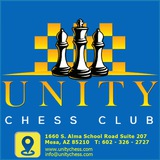With the exchange of light-squared bishops, Black loses his last hopes of counterplay. White can put his rooks on d3 and d1, and Black can no longer hassle them with a bishop from f5 or g4. In another situation, Black could try to activate his position a little with ...b6-b5, but in this position, such a break is impossible.
25...Kh7 26.Bxe6 Qxe6 27.Rd3 Rc7 28.Rcd1 Rf7 29.Ne4 Bf8 30.Rd5 Qg4 31.R1d3
White gradually seizes space for his pieces – the rook on d5 assists the advance of the a-pawn, if White wishes.
This wins at once, so White is able to dispense with further manoeuvring and strengthening of his position. But now imagine that the d6-pawn was defended. In this case, White can strengthen his position with the moves Kg1-g2 and a2- a4. Later, depending on circumstances, he can play a4-a5, or advance the h-pawn with h2-h4, further restricting the black bishop, and creating the potential threat of h4-h5.
32...Bxd6 33.Rxd6 Rdf8 34.Qxe5 Rxf2 35.Rd7+ R8f7 36.Rxf7+ Rxf7 37.Rd8 Rg7 38.Qe8 g5 39.Qh8+ Kg6 40.Rd6+ Kf7 41.Qxh6 Qf5 42.Rd1 Qc5+ 43.Kg2 Qe7 44.Rf1+ Kg8 45.Qf6 Qe8 46.Qf5 g4 47.Rf2 Qe7 48.Qd3 Rg5 49.Re2 Qf8 50.Qe4 Rg7 51.Qd5+ Qf7 52.Re6 1-0
FIDE has launched an online chess museum where you can find handwritten notes of the most important matches, ancient chess sets and many other interesting things from the history of chess
https://museum.fide.com
https://museum.fide.com
Unity Chess Club
Isaak Boleslavsky Salomon Flohr Budapest 1950 White to move
Because of the backward pawn on c7, White has the advantage. However, if Black can play ...Nd8-e6, his position will already not be so bad – in the first place, there is the idea of ...c7-c5. To stop this freeing break, White can play b2-b4, but this move restricts his own bishop, and he does not wish to do this unless absolutely necessary. Therefore, while he has the chance, White carries out a favourable exchange of dark-squared bishops:
White forces ...g7-g6, because simple variations show the benefits of weakening the square f6.
White has won a pawn without any compensation, and the rest is technique.
23...Qf7 24.Rf1 Ra8 25.Qxc6 Rxa2 26.Qxb5 Qa7 27.Qb4 Ra6 28.Rc5 Rb6 29.Qc3 Rf7 30.b4 Ra6 31.b5 Ra2 32.Rc6 Qe7 33.b6 Qb7 34.Rxe6 Qa6 35.Qe3 Kg7 36.Rf6 Rb7 37.Rb1
Unity Chess Club
Anatoly Karpov John van der Wiel Tilburg 1988 White to move
White’s task is to prevent the freeing move ...c6-c5. The white knight aims to control the c5-square, at the same time freeing up f3 for his bishop, from where it can successfully attack the enemy weakness:
A mistake, after which White also obtains the b4-square, which makes it even easier to control a whole complex of dark squares.
He should have chosen 19...Be7, and then ...Rd8-c8.
He should have chosen 19...Be7, and then ...Rd8-c8.
